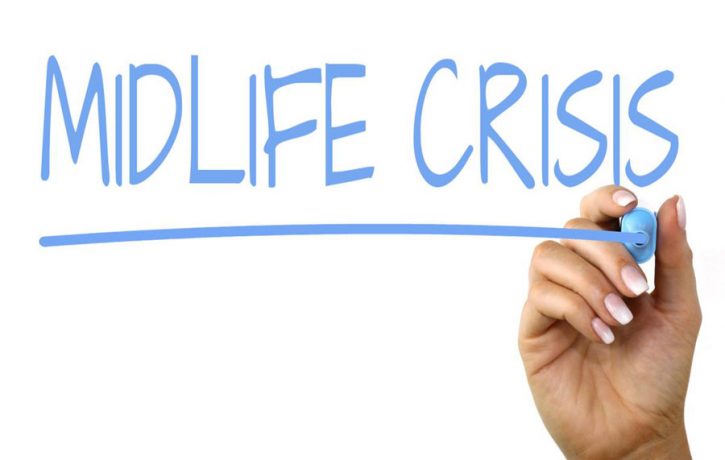in Mindfulness
Midlife Malaise – and Reboot!

Jonathan Rauch’s book ‘The Happiness curve’ is an excellent study of midlife – a time which is often characterised by clichés of red open-top sports cars and motorbikes! ‘The Ladybird book of mid-life crisis’ has these clichés and more: “Phil does not regret leaving his wife, growing his hair and starting to wear cowboy boots” for example. And there’s more: “Paul recently bought a shark-tooth necklace. Ray has spent the morning bidding on a leather biker jacket. Last night, Charlie Googled local triathlons”.
Rauch argues that the transition that people go through during midlife should be given the same importance and respect by society as given to adolescence. In fact, society’s current response to midlife change is one of either medicalisation of symptoms – or mockery.
The gist of the Happiness curve that Rauch identifies is that in our youth we (mostly) have an ‘Optimism bias’, in which we anticipate all the great things that the future holds. This tendency is hard-wired into us – without it, we wouldn’t have the motivation to so much as get out of bed each morning. As youths then, realism is bad for us – “Hope keeps our minds at ease, lowers stress and improves physical health” as one contributor to Rauch’s book says. However, in our youth, we also over-estimate the happiness that our future life-successes will give us. The result is that over the following years (and decades!), we experience continuous disappointments – and the cumulative effect of this is to drag-down our level of life-satisfaction. This occurs even if our life has been more successful than we imagined in our youth. In fact, this negative effect on our enjoyment of life may be even more severe if we are highly successful. This is because we know that objectively we should be happier than we are – that, on the face of it, we have little to be unhappy about. ‘Counting our blessings’ then, may not make life feel better, but do the very opposite: we know we ‘should’ be happy, but we’re not – making us even less happy!
However, at the age of about 50, things change. Just when we have got used to disappointments – the “depressive realism of middle age”, life gets more enjoyable than we imagined it would be. People’s ratings of their happiness rise (we are now on the upward slope of the U-shaped happiness curve) – people’s happiness is now greater each year than they anticipated.
Contrary to stereotypes then, with age comes happiness. Older people are not depression-prone. After 50, stress declines, as does regret, whilst regulation of emotions improves. One contributor to this book says that with age “we lose not our emotional sharpness, but our tendency to have our day ruined by annoyances and setbacks”. How happy we feel our life to be, on a 1-10 scale, rises.
Like the unrealistic optimism of youth, midlife transition or re-orientation may have evolutionary advantages, as we devote greater focus to supporting those around us – something that Rauch refers to at one point as ‘the grandmother effect’ – where older people’s efforts support the children of their children.
Whilst Rauch believes the Happiness curve to be hard-wired (and cites evidence that a similar tendency is experienced in apes), awareness of the curve can aid us, as can therapy and coaching, in getting through this period of our lives.
To arrange a free 30-minute consultation to discuss how BWRT®, hypnotherapy or counselling can help you to change your life for the better, contact Jonathan at The Body Matters on 01702 714968.
- COVID-19 and the Fear of Needles - 22nd March 2021
- The Damaging Effects of the Pandemic - 1st March 2021
- What is Yangsheng? - 27th January 2021
